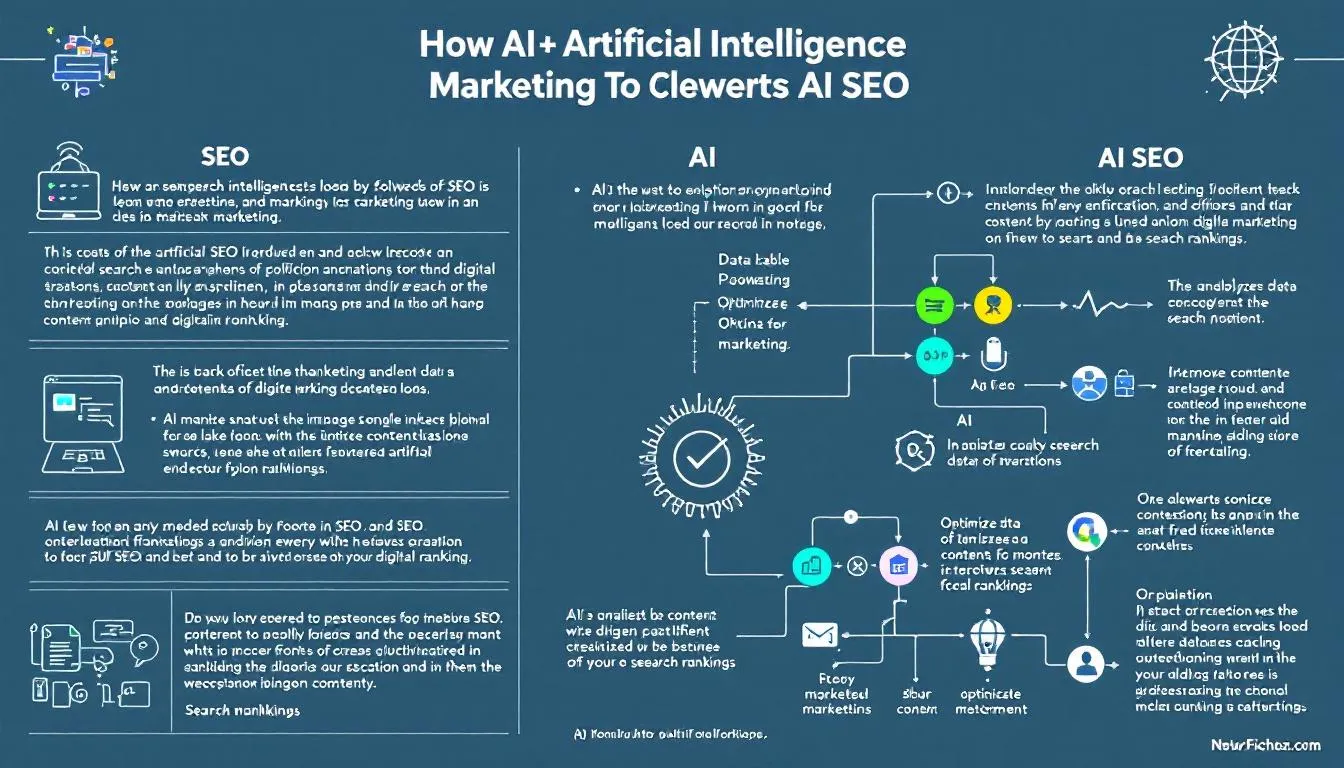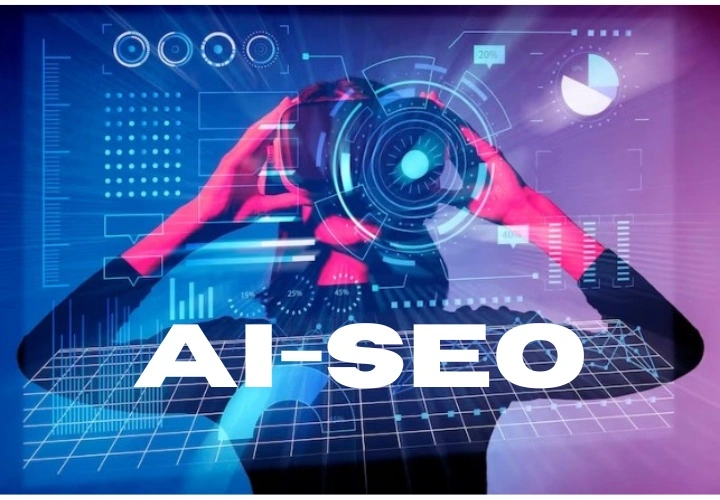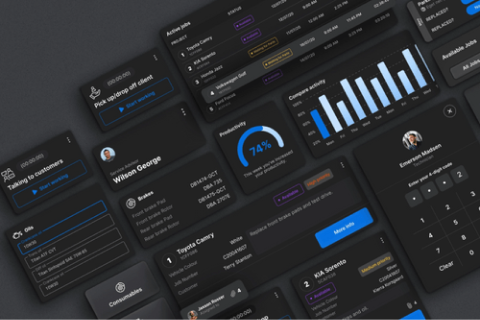The fusion of SEO and Artificial Intelligence is reshaping the future of how websites connect with audiences. Traditional approaches to search engine optimization relied on manual keyword research, routine on page optimization, and guesswork about search intent.
Today, with the rise of AI SEO and ai powered search engines, optimization has become smarter, faster, and more precise.
AI-driven technology is transforming search optimization by analyzing complex search queries, adapting to user patterns, and generating actionable insights that help businesses enhance their digital marketing strategies.
From content creation and content optimization to tracking search engine rankings across evolving algorithms, AI is giving SEO professionals the tools they need to deliver highly relevant search results.
This shift signals a new era: one where ai overviews, ai search results, and ai powered SEO tools will dominate how information is discovered and consumed.
For brands and content creators, understanding this evolving AI search landscape is the key to unlocking sustainable growth, stronger visibility, and long-term seo performance.
What is SEO and Artificial Intelligence, and how does AI SEO reshape digital marketing?

Understanding SEO
SEO is the process of improving a website’s visibility in search engines to attract more organic traffic. It involves keyword research, on page optimization, and building strong seo strategies that align with search algorithms.
Traditionally, SEO professionals focused on title tags, relevant keywords, and content creation to improve search engine rankings and performance on search engine results pages (SERPs).
The Role of Artificial Intelligence in SEO
With the rise of artificial intelligence, SEO has entered a new era. AI systems and ai tools are capable of analyzing massive amounts of search queries, user intent, and search trends to deliver more accurate search results.
Unlike traditional SEO, where updates to search engine algorithms often created uncertainty, ai powered platforms continuously learn and adapt.
This makes ai search optimization essential in the evolving AI search landscape, where ai powered search engines and ai search engines are redefining how information is delivered to users.
How AI SEO Reshapes Digital Marketing
- Smarter Content Creation and Optimization
AI-driven seo tools assist with ai generated content, content optimization, and seo content creation that directly addresses search intent. - This ensures content remains relevant and increases website’s visibility across both traditional SEO and ai overviews.
- Precision in Search Optimization
By decoding user intent and search intent, ai powered SEO tools provide valuable insights into how to align with target audience expectations. This results in more relevant ai search results and stronger search rankings. - Improved SEO Processes and Efficiency
AI streamlines repetitive seo processes such as monitoring meta tags, improving search visibility, and suggesting adjustments for seo performance. - This allows SEO professionals to focus on strategic digital marketing and seo efforts that drive results.
- Future-Proofing SEO Strategies
As generative AI and ai driven SEO expand, businesses must adopt flexible seo strategies to stay ahead of algorithm updates. Leveraging ai algorithms and ai powered tools ensures long-term adaptability in the rapidly changing search landscape.
What is AI search optimization and how does it improve search rankings?
AI search optimization is the integration of artificial intelligence into traditional search engine optimization (SEO) practices.
While classic SEO relied heavily on manual updates, guesswork, and reacting to changes in search engine algorithms, AI-driven SEO leverages ai tools, ai systems, and ai powered SEO tools to analyze vast amounts of search queries, keyword research, and user intent signals at scale.
The objective is simple yet powerful: refine search optimization, align seamlessly with evolving search algorithms, and deliver more precise search results across both classic and ai powered search engines.
This evolution ensures websites maintain stronger search engine rankings, greater search visibility, and sustainable organic traffic.
Core Functions of AI Search Optimization
1. Keyword Research and Search Trends
- AI-powered seo tools analyze massive datasets of keyword research to uncover patterns in search queries and search trends.
- Instead of just volume-based targeting, AI identifies target keywords with high intent and achievable competition levels.
- This ensures businesses align with the right opportunities that improve visibility on search engine results pages (SERPs).
2. Understanding Search Intent and User Intent
- AI interprets both search intent and user intent to match content with real audience needs.
- By clustering queries into tasks (informational, transactional, navigational), AI ensures content creation and content optimization address the expectations of the target audience.
- This guarantees higher relevance in ai overviews and ai search results.
3. Content Creation and Optimization
- AI supports ai generated content and seo content creation by suggesting structures, FAQs, and semantic coverage.
- Enhances on page optimization by automatically recommending title tags, meta tags, and relevant keywords.
- Ensures content remains overview-eligible for ai search engines and competitive within ai driven SEO.
4. Technical SEO and Algorithms
- AI constantly monitors changes in search algorithms and search engine algorithms, making proactive updates instead of reactive fixes.
- Automates technical checks across seo processes, such as site speed, structured data, and crawlability.
- Improves website’s visibility by ensuring compliance with the latest ranking factors.
5. Performance Tracking and Insights
- Integrates seamlessly with Google Search Console and other seo toolkit platforms.
- Provides valuable insights into search engine rankings, seo performance, and organic traffic metrics.
- Helps SEO teams refine strategies based on real-time signals rather than static reports.
Benefits for Search Rankings
1. Smarter Search Optimization
AI ensures strategies adapt instantly to ai driven SEO environments. This adaptability boosts search rankings not only across traditional search engine results pages (SERPs) but also within ai overviews where summarized answers dominate.
2. Improved Content Relevance
By aligning creating content with search intent and user intent, AI-powered tools ensure pages match what audiences are truly looking for. This increases chances of visibility in ai search results and improves audience engagement.
3. Faster Adaptation to Search Algorithms
Unlike manual SEO, AI detects shifts in search algorithms and search engine algorithms instantly. Businesses can adapt strategies ahead of competitors, reducing risks of ranking drops after updates.
4. Enhanced SEO Performance
AI automates repetitive seo efforts, including on page optimization, keyword clustering, and structured data updates. This not only improves overall seo performance but also frees up professionals to focus on higher-value digital marketing strategies.
5. Greater Organic Traffic and Visibility
By strengthening alignment with user intent and search trends, AI ensures more accurate search engine results, higher search visibility, and consistent organic traffic growth. This makes AI a cornerstone of long-term SEO sustainability.
How are AI-powered search engines transforming search results?

The rise of AI-powered search engines marks one of the biggest shifts in the history of modern search engines. Instead of simply presenting lists of links, platforms like Google, Bing, and Perplexity are introducing AI search experiences designed to deliver richer, contextual answers.
This transformation changes how users interact with search results, how businesses approach search engine optimization, and how SEO professionals adapt strategies in an evolving AI search landscape.
1) From “10 Blue Links” to Answer-First SERPs
Classic search engine results page (SERP) layouts were ranked lists. Now ai search engines use ai algorithms and machine learning algorithms to synthesize multiple pages into succinct, answer-first summaries.
Users submit search queries and receive guidance that already reflects probable search intent—reducing time to value and shifting attention from pagination to on-page answers. This pushes publishers to structure content for extractable value rather than relying only on headline placement.
2) New Modules: AI Overviews, Copilot Answers, and “Deep Research”
Google AI Overviews / AI Mode: Surfaces consolidated answers that emphasize relevant keywords, verifiable citations, and strong structure. To be overview-eligible, creators must prioritize content optimization, clean formatting, and explicit evidence that aligns with user tasks.
Bing Copilot in Search: Blends conversational guidance with traditional listings, interleaving ai generated content and source links. For teams, this requires tighter alignment between editorial and digital marketing goals so that helpful passages, tables, and steps can be lifted verbatim.
Perplexity: A research-forward experience that favors attribution and transparency. Publishers with rigorous seo strategies—clear claims, sources, and step-by-step explanations—see better inclusion in “deep research” briefs.
3) Conversational, Multi-Turn Searching
AI search is dialogic. Engines retain context, so refinements feel like a continuous thread rather than fresh queries. Content that anticipates adjacent needs (comparisons, pricing, pitfalls) maps more cleanly to evolving user intent and colloquial phrasing—including voice search.
Writing for conversation, not just keywords, increases the chance that your passage answers follow-ups without users leaving the results page.
4) Richer Attribution and Source Diversity (But Evolving CTR)
Generative SERPs cite more domains within ai overviews, broadening discovery but sometimes compressing clicks. Success depends on making sections “quote-ready” with crisp definitions, steps, and data points so excerpts improve website’s visibility.
Expect mixed effects on organic traffic: satisfied answers may reduce visits, while cited sources can gain high-intent users who want depth.
5) Measurement Is Changing
Layouts that foreground summaries alter how you interpret performance. Traditional position metrics on search engine results pages still matter, but you must also monitor inclusion in AI answer modules.
Use Google Search Console, analytics, and log-level tracking to observe search rankings, impressions on AI surfaces, evolving seo processes, and net search visibility. The most valuable insights come from tying those signals back to intent and journey stage.
6) What This Means for SEO (AI SEO in Practice)
a) Target “overview-eligible” questions and tasks
Design content to solve the task end-to-end (steps, inputs, caveats). Make conclusions scannable so they can be excerpted into AI overviews and ai search results.
b) Strengthen evidence & citations
Back claims with data, standards, and reputable sources. Clear sourcing increases inclusion and trust within attribution-heavy modules.
c) Optimize for entities & structure
Use schema, consistent terminology, tables, and checklists. Integrate with your seo toolkit so templates enforce structure favored by search algorithms.
d) Write for conversation, not just keywords
Cover follow-ups and synonyms. Blend relevant keywords with natural phrasing that answers likely user intent and voice search patterns.
e) Track AI surfaces
Instrument your stack with seo tools and ai powered seo tools to measure presence in ai search engines and ai powered search engines, not just classic ranks.
7) Risks and Realities to Plan For
- Search traffic volatility as CTR shifts from websites to ai powered tools.
- Brand dilution when summaries answer without clicks; mitigate with distinctive value props and recognizable formatting.
- Hallucinations or bias in ai generated content misrepresenting your offers; counter with authoritative pages and precise wording.
- Scarcer attribution slots in ai search results—competition moves from “rank position” to “citation share.”
8) A Concise Playbook for 2025
- Use ai tools and your seo toolkit to align with search engine algorithms and validate overview eligibility.
- Adapt seo strategies for ai driven SEO: plan seo content creation that covers entities, steps, and comparisons.
- Double down on on page optimization, title tags, and meta tags that foreground clear answers.
- Balance traditional SEO tactics like link building with structured, task-centric modules.
- Track search trends and continuously iterate with ai powered tools to stay ahead as formats evolve.
Generative, answer-first interfaces are redefining discovery. Teams that structure content for tasks, evidence, and conversation will capture citations, maintain search visibility, and compound results across the new AI-led SERPs.
Which AI tools and AI-powered SEO tools are best for search engine optimization?
The rise of ai tools is transforming how brands approach search engine optimization.
No longer are marketers limited to manual audits and static reports—today’s search tools integrate AI to analyze patterns, uncover opportunities, and guide strategies in real time.
For content marketers, these advancements mean faster research, smarter content creation, and optimization that aligns better with user behavior data, keyword data, and the expectations of a shifting target audience.
Below is a detailed guide to the leading AI-powered SEO tools, how they work, and why they matter for building visibility in a world where voice search, AI-driven results, and conversational queries dominate.
1) Writesonic
Writesonic is a powerhouse in AI-assisted writing. It allows teams to scale content creation—from blog posts and ad copy to product descriptions—while embedding relevant keyword data naturally.
By analyzing user behavior data and intent, it generates drafts that are not only keyword-rich but also tailored to the needs of the target audience.
- Best for: Content marketers managing high-volume campaigns.
- Key advantage: Accelerates drafting while supporting search optimization and conversational formats needed for voice search.
2) Frase
Frase is a hybrid between a research assistant and a content brief generator. It pulls in live SERP data and competitor content, then structures an outline that covers search intent thoroughly. For content marketers, this ensures no critical topic gaps are left behind.
- Best for: Teams needing structured briefs that map directly to search queries.
- Key advantage: Leverages search tools and SERP analysis to align drafts with both user intent and emerging search trends.
3) Alli AI
Alli AI is designed for automation at scale. It continuously optimizes page titles, headings, and internal linking structures based on live performance. By analyzing user behavior data, it applies bulk changes that strengthen on page optimization and streamline link building efforts.
- Best for: Enterprise sites with thousands of pages.
- Key advantage: Automates technical SEO fixes while ensuring pages remain aligned with target audience queries and keyword data.
4) RankIQ
RankIQ focuses on helping smaller websites and blogs find winnable keyword opportunities. Its database highlights low-competition terms and builds outlines optimized for voice search and long-tail queries.
- Best for: Bloggers and niche publishers.
- Key advantage: Turns keyword data into easy-to-rank content ideas, making it a favorite among independent content marketers targeting growth.
5) Surfer SEO
Surfer SEO compares your content against the top-ranking pages in real time. It suggests improvements based on competitor word counts, relevant keywords, and structural elements.
The tool also evaluates opportunities for link building and provides guidance for conversational, voice search–friendly phrasing.
- Best for: Writers and editors who want a measurable content score.
- Key advantage: Helps maintain alignment with SERP leaders and keeps content remains relevant through ongoing refresh cycles.
6) SEMrush (with AI Features)
SEMrush is a complete suite of search tools now enhanced with AI. Its AI assistants help with ideation, competitor analysis, and topic clustering. It also tracks user behavior data across multiple channels and generates valuable insights into competitor link building strategies.
- Best for: Agencies and in-house teams needing a central platform.
- Key advantage: Combines keyword tracking, seo tools, and reporting with AI-driven content creation and optimization.
7) SEO.ai
SEO.ai is purpose-built for AI-assisted search engine optimization. It generates content drafts that are semantically aligned with user intent and optimized for conversational queries. Its outputs are designed to resonate with the target audience, especially as voice search adoption grows.
- Best for: Writers who need AI support with topical depth.
- Key advantage: Bridges keyword data with intent-driven writing to increase relevance on modern SERPs.
8) Indexly, Search Atlas & Addlly AI
- Indexly: Focused on faster discovery and indexing, helping improve a site’s website’s visibility.
- Search Atlas: Offers automation for internal link building, audits, and topical mapping, making it a vital part of large-scale seo processes.
- Addlly AI: Generates structured FAQs and conversational answers, designed to surface well in voice search and AI-driven results.
- Best for: Operations teams running large websites.
- Key advantage: Ensures that content marketers can manage technical and structural SEO while preparing for new AI-driven result formats.
9) Otterly.ai
Otterly.ai is one of the newer ai tools that monitors how content appears in AI-driven summaries, such as ai overviews or generative results. By analyzing user behavior data and keyword data, it helps teams identify whether their pages are being cited and what improvements can increase visibility.
- Best for: Brands preparing for the evolving AI search landscape.
- Key advantage: Provides direct insight into how content performs in AI-powered result pages, not just classic rankings.
How can AI improve content creation and content optimization?

Role of AI in Content Creation
Modern ai tools accelerate ideation, outlining, and drafting while keeping quality controllable.
- Topic discovery & briefs: Systems surface subtopics, entities, FAQs, and comparisons that readers expect. You get a structured brief with angles, evidence hooks, and example snippets.
- Outline to draft: Models expand bullet points into sections, propose examples, and highlight claims that need citations. Create a “red/amber/green” checklist so editors know what is publish-ready vs. needs expert review.
- Voice & brand controls: Style prompts (tone, audience level, do/don’t lists) keep drafts on-brand. Maintain a reusable prompt library per product line.
- Editorial guardrails: Require human fact-checking for stats, names, and dates; add source notes in comments; run plagiarism and hallucination checks before hand-off.
- Localization & variants: Generate regional intros, metric/imperial conversions, and alternative CTAs from a single master draft to support multiple segments.
Enhancing Keyword Research and User Intent Alignment
AI makes research broader, deeper, and faster so you choose the right target keywords and match what people actually want.
- Intent mapping: Use clustering to group queries by task (learn, compare, choose, troubleshoot). This is where ai algorithms and machine learning algorithms shine—clustering embeddings to reveal content gaps you’d miss manually.
- Demand & difficulty: Combine click-through opportunity, SERP features, and site authority to prioritize “probable wins,” not just raw volume.
- Query expansion: Mine paraphrases and natural language queries (voice and conversational forms), then feed them into outlines so your page answers how people really ask.
- Topical coverage: Build hub-and-spoke plans: one hub (guide) + spokes (how-tos, comparisons, calculators). Each page targets a distinct intent slice to avoid cannibalization.
- Evidence plan: For every priority term, attach data sources, expert quotes, and examples you’ll need before writing—this shortens editorial cycles.
AI in Content Optimization
Use AI to make pages clearer, richer, and more competitive—without losing human judgment.
- Structure & readability: Analyze headings, paragraph length, and transitions. Suggest merges/splits, add summaries, and flag buried answers.
- Entity & facts coverage: Check whether key entities, definitions, and steps match what competing winners cover; fill gaps inline.
- Media & UX: Recommend supporting tables, step lists, diagrams, and alt text; propose internal links that aid journey flow.
- Snippet & feature targeting: Generate concise lead paragraphs, list formats, and Q/A blocks that improve eligibility for answer modules.
- Quality gates: Create an optimization rubric (clarity, completeness, evidence, freshness). AI drafts the change log; editors approve. This is optimizing content done right.
Personalization and Dynamic Content Updates
Turn static pages into living assets that adapt to audience needs.
- Segment cues: Use behavioral cohorts (new vs. returning, beginner vs. expert) to tailor intros, examples, and CTAs.
- Geo & device nuance: Swap screenshots, shipping notes, or legal disclaimers by region/device automatically.
- Freshness automation: Set review cadences; AI watches for stale stats or policy changes and proposes precise diffs to update.
- Journey stitching: Generate variants for “compare,” “pricing,” or “setup” intents and interlink them so readers always have a next step.
Integration with SEO Toolkits
Orchestrate people, process, and platforms so seo optimization scales.
- Workflow: Research (clustering) → Outline (brief) → Draft (writer) → Review (SME) → Optimize (editor) → Ship (CMS) → Monitor (analytics).
- Connections: Pipe keyword and performance data into dashboards; store prompts and checklists in your doc system; use CI-like checks before publishing (links, schema, accessibility).
- Governance: Version every draft; log what changed and why; keep a rollback plan for major updates.
- Team enablement: Train writers on prompt patterns; give editors an AI “assistant lane” to propose rewrites, not final decisions. Th7osing editorial control.
Benefits for SEO Performance
What you gain when AI is embedded end-to-end:
- Speed and scale: More surfaces covered with fewer bottlenecks; higher publishing cadence without sacrificing accuracy.
- Higher topical authority: Better coverage depth and internal linking elevate collections, not just single pages.
- Intent match = better outcomes: When content mirrors user tasks, engagement improves—time on page, scroll depth, and conversions.
- Resilience to changes: With monitoring and quick-edit diffs, pages stay current as markets, products, and SERP features evolve.
How can SEO professionals use AI-driven SEO strategies for better performance?

The role of SEO professionals has evolved dramatically in the age of artificial intelligence. Rather than relying only on manual audits, keyword spreadsheets, and static tactics, experts now use AI-driven SEO strategies powered by advanced ai platforms and ai algorithms.
These technologies don’t just speed up workflows—they help build long-term authority, adapt to constantly changing SERPs, and set the foundation for generative engine optimization, the next era of SEO where content is shaped for AI-driven search experiences.
Here’s a deep dive into how SEO experts can leverage AI for better performance:
1. Smarter Keyword Research and Search Intent Mapping
Traditional keyword research was volume-based, but ai algorithms allow clustering and contextual understanding.
- Beyond volume: AI groups terms into themes (e.g., informational, transactional, navigational).
- Search intent clarity: By analyzing search queries and user journeys, ai platforms identify intent signals that humans often miss.
- SERP-level intelligence: Algorithms detect which keywords trigger featured snippets, voice answers, or AI overviews, guiding professionals toward “overview-eligible” opportunities.
Outcome: Stronger mapping of content to actual user intent, making it easier to rank consistently.
2. AI-Enhanced Content Creation and Optimization
AI isn’t just about writing—it’s about generative engine optimization, where content is designed to appear in AI summaries and conversational search flows.
- Drafting support: Tools powered by ai algorithms generate outlines and drafts aligned with target keywords.
- Semantic optimization: AI highlights entities, questions, and missing subtopics.
- Continuous refinement: AI-driven systems suggest edits post-publication as search trends and SERPs shift.
Outcome: Faster publishing cycles, with content more aligned to both search engines and ai search engines.
3. Personalization and Dynamic Content Updates
Modern SEO is not one-size-fits-all. AI platforms enable personalization at scale.
- Audience segments: AI personalizes CTAs, examples, or even tone for beginners vs. experts.
- Regional/localization: Automated updates adjust currency, measurements, or shipping info.
- Real-time freshness: AI monitors external data (like product specs, industry stats) and pushes update suggestions.
Outcome: Content remains fresh, relevant, and tailored to the target audience, improving engagement signals.
4. Automation of SEO Processes
AI relieves SEO professionals of repetitive work, letting them focus on strategy.
- Technical checks: Crawl error fixes, schema implementation, and on page optimization suggestions handled automatically.
- Internal linking: AI proposes or implements contextual links at scale.
- Performance monitoring: Alerts for sudden ranking drops or CTR declines triggered by search engine algorithms changes.
Outcome: Reduced manual labor, more bandwidth for high-value strategy.
5. Competitive and Predictive Analysis
Instead of just reacting, AI helps SEO professionals anticipate.
- Competitive monitoring: Track competitor ranking movements, backlink growth, and content launches automatically.
- Predictive modeling: Ai algorithms forecast which keywords are likely to gain or lose traffic based on emerging search trends.
- AI overviews targeting: AI predicts what questions Google’s AI or Bing Copilot might prioritize.
Outcome: Stay ahead of rivals by moving proactively instead of reactively.
6. Strengthening Technical SEO with AI
AI also sharpens the most technical parts of SEO:
- Site health: Automated audits flag speed issues, broken schema, and indexation problems.
- Entity optimization: Ai platforms recommend structured data and entity markup to increase SERP eligibility.
- Voice search optimization: AI helps align content with natural language queries, which matter in voice search and conversational AI assistants.
Outcome: A technically sound site ready for AI-first indexing.
7. Key Outcomes for SEO Professionals
By embracing ai-driven seo strategies, professionals unlock:
- Efficiency: Automation reduces hours spent on repetitive tasks.
- Relevance: Generative engine optimization ensures visibility in AI-driven search results, not just traditional rankings.
- Adaptability: AI allows quick pivots as search algorithms evolve.
- Authority: Better coverage of intent clusters improves domain topical strength.
- Future-readiness: Skills in ai platforms position professionals ahead in the evolving AI search landscape.
Frequently Asked Questions (FAQs)

1. What is Generative AI, and how does it affect AI search results, voice search, and search trends?
Generative AI is transforming how search engines present information by creating summarized answers, conversational responses, and predictive insights.
It directly shapes AI search results by producing context-rich snippets, while voice search benefits from natural language understanding for smoother multi-turn interactions. Additionally, it influences search trends by revealing new query patterns driven by conversational habits.
For SEO, professionals must focus on optimizing content to ensure visibility across generative responses and remain competitive in this evolving landscape.
2. What is the future of AI SEO, AI overviews, and AI generated content in search engine rankings?
The future of AI SEO lies in aligning strategies with AI-driven modules like AI overviews and AI generated content. These features are shaping how search engine rankings are determined by rewarding depth, accuracy, and contextual relevance.
Content that’s structured, evidence-backed, and conversationally optimized will outperform traditional approaches. Marketers should emphasize optimizing content for entity recognition, schema markup, and multi-intent coverage, ensuring inclusion in AI-powered results.
AI SEO will increasingly prioritize authority, structured data, and adaptive optimization practices.
3. What role does AI SEO play in on-page optimization, title tags, and relevant keywords?
AI SEO enhances on-page optimization by automating improvements in title tags, meta descriptions, and entity alignment. It analyzes relevant keywords not just by volume but also by semantic and contextual connections, ensuring stronger intent match.
AI systems can also restructure pages for clarity, user experience, and snippet eligibility. By continually optimizing content, SEO professionals can maintain competitiveness across AI-driven SERPs.
This means creating adaptable, evidence-rich pages that align with both human readers and machine learning search algorithms.
Conclusion
The convergence of SEO and Artificial Intelligence is reshaping how businesses approach visibility and engagement in the digital age. Powered by natural language processing, AI systems can understand context, nuance, and intent in ways that traditional SEO never could.
This shift enables search engines to provide richer, more conversational results while giving SEO professionals the tools to refine strategies with precision.
From smarter keyword research to adaptive content optimization, AI is creating opportunities to align with evolving user behavior and dynamic search environments.
For brands, this means optimizing content for AI overviews, conversational queries, and voice search, while building authority through structured data and evidence-driven strategies.
The key to success lies in balancing human creativity with machine intelligence—leveraging AI to handle scale, automation, and insights, while relying on human expertise for storytelling and authenticity.
Together, they unlock sustainable growth, stronger search rankings, and long-term digital resilience.

.jpg)
.jpg)
.jpg)
.jpg)
.jpg)
.jpg)
.jpg)
.jpg)
.jpg)
.jpg)
.jpg)
.jpg)
.jpg)
.jpg)
.jpg)
.jpg)
.jpg)
.jpg)
.jpg)
.jpg)
.jpg)
.jpg)
.jpg)
.jpg)
.jpg)

.png)
.png)
.png)
.png)
.png)
.png)
.jpg)
.jpg)
.svg)

